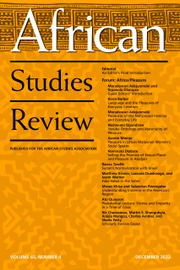Part of review forum on “Higher Powers: Alcohol and After in Uganda’s Capital City”
Higher Powers: Alcoholism and After in Uganda’s Capital City presents a trenchant, moving critique of the Western biomedical model for alcohol addiction referred to as “chronic relapsing brain disease” (CRBD). CRBD frames alcoholism as a diagnosable affliction that must be managed for a lifetime, as if a chronic disease. Adopted by Alcoholics Anonymous (AA), the CRBD model is so widespread that it has become common knowledge for many North Americans. Through careful, detailed ethnography of four different approaches to alcoholism treatment in Kampala, Higher Powers offers another possibility—the idea that alcoholism is curable, something from which one may be released. Presented in stark contrast to the CRBD model, the alternative theories and therapies for alcoholism that Higher Powers describes are centered on hope for the future rather than the despair of diagnosis, and on the continuity of one’s social and spiritual self rather than on strict severance with one’s past. Higher Powers proposes that understanding these alternative approaches is crucial both for more effective treatment in Uganda, where the problem of disordered alcohol use is extreme, and for reconceptualizing addiction treatment elsewhere, too.
This is an especially pressing proposition given the CRBD model is rapidly expanding alongside the broader globalization of the psy-sciences, as Higher Powers describes. In Kampala, CRBD-model addiction clinics serve primarily the city’s educated, English-speaking elite. Through the story of Maurice, readers come to understand how the CRBD model makes demands on the sufferer that are difficult, if not impossible, to uphold. One must suspend relations with former friends, for example, and remove oneself from the bar scene, which, as Higher Powers explains in its first chapter, is the social, political, and economic scene of masculinity in Kampala. Even when opportunities for socializing with other patients did arise, such as in AA meetings, CRBD-model clinics explicitly forbade patients from exchanging material support. This forbiddance runs counter to normative models for sociality and intimacy in central Uganda, which turn on material interdependencies. It also leaves patients like Maurice without the food and shelter he needed to survive, with or without addiction.
The rehab clinics Maurice visited contrast with three other, vernacular forms of addiction treatment described in Higher Powers, even as those therapies revolve around ongoing forms of care that may, at first glance, appear similar to the chronic management required by the CRBD model. Mayanja, for example, was sickened by herbal medicine and now “understands that he cannot drink again.” Daniella and Richard, whose demons were exorcized, remain employed and socially engaged by the church. Semeju and Irene, aided by spiritual mediums called basamize, make regular offerings to their ancestral spirits. Each remedy requires orienting oneself, one’s time, one’s work, and one’s social and spiritual relations to the ongoing maintenance of sobriety.
But doing the work to maintain one’s good life over the course of one’s life is, Higher Powers forcefully argues, not at all the same as the requirement for lifelong management of a diagnosed chronic disease. While an alcoholism diagnosis may absolve the sufferer from feeling that the alcohol disorder is their fault, it also sutures addiction to the person by rooting it in the body. The biomedical CRBD model, reliant as it is on Cartesian mind/body dualism, demands the person constantly, consistently act upon her body—an altogether too-taxing demand for most. By contrast, the release-based therapies featured in Higher Powers, whether herbal emetic, exorcism, or basamize ritual, get the addiction “out” of the body and therefore out of the person. Ridding the body and person of addiction keeps the person connected to their social and material supports. In so doing, these remedies facilitate what Carolyn Smith-Morris calls a “defragmented approach to health,” linking a person’s pre-, during-, and post-addiction experiences in ways that honor the continuity of one’s life (“The Chronicity of Life, the Acuteness of Diagnosis” in Chronic Conditions, Fluid States: Chronicity and the Anthropology of Illness, edited by Lenore Manderson and Carolyn Smith-Morris, 21–37. New Brunswick: Rutgers University Press, 2010, at p. 22).
Scholars of health and healing in Africa might note that the contrast Higher Powers draws between biomedical and vernacular healing practices may not be lived so starkly, as therapeutic trajectories tend to wind through multiple medical systems and across ontological divides. At the same time, for those teaching students who struggle to question the hegemony of biomedicine, especially students interested in global health, Higher Powers makes the case for learning about healing through “traditional” medicine. It is an exceptionally effective and urgent text.

